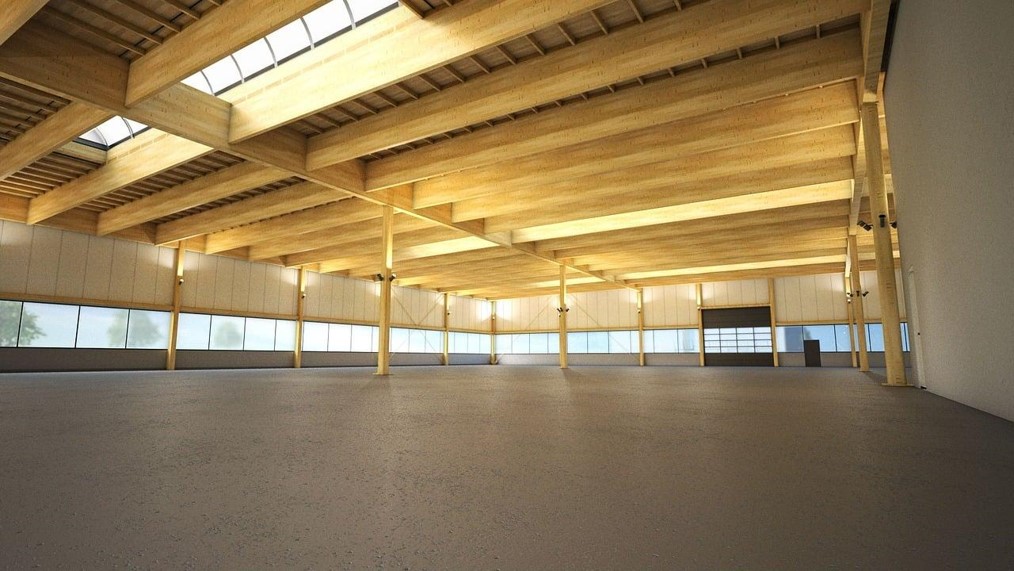

MakMax Plus
Advantages of Renting or Leasing Temporary Roofs│Efficiently Manage Contaminated Soil Response Construction Sites
2020.06.26
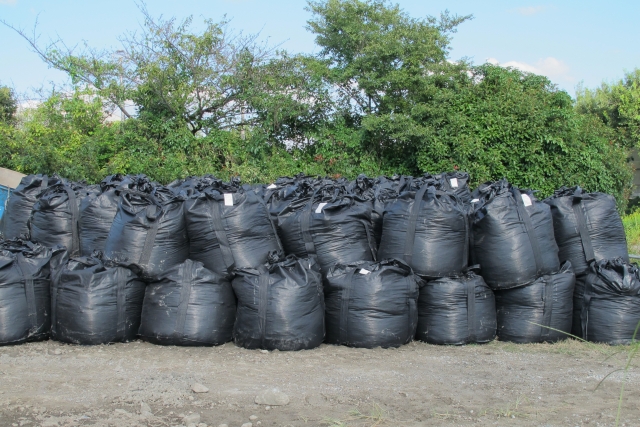
In some cases, roofs are required at contaminated soil response construction sites, depending on how the contaminated soil is treated and other factors. Temporary roofs, which would be expensive if purchased, can be installed cheaply and easily through rentals and leases, making construction sites more efficient. This article discusses the benefits of renting or leasing a temporary roof and the wide variety of options available.
Please take a look at our website and use it to help you consider renting or leasing a temporary roof.
Table of Contents
1 Contaminated soil response construction site requiring a temporary roof
2 Difference between temporary roof and temporary building
3 Advantages of renting or leasing a temporary roof
4 Wide variety of temporary roofs available for rent or lease to accommodate various contaminated soil construction sites
5 Conclusion
Contaminated soil response construction site requiring temporary roof
Contaminated soil is soil (soil) with content exceeding the standard values for specified hazardous substances, which can be contaminated as a result of improper handling of hazardous substances from factories or contaminated from natural sources.
Direct ingestion of contaminated soil or drinking groundwater, etc. to which contaminated soil has leached may be hazardous to health.
Therefore, a law called the Soil Contamination Countermeasures Law has been formulated to assess the status of soil contamination and to prevent human health hazards caused by soil contamination.
This law defines the land that is subject to the obligation of soil contamination investigation, the specific hazardous substances to be covered, and the standard values. In addition, soil may accumulate dioxins, which are produced by incomplete combustion of chlorine-containing substances, etc.
The Dioxin Special Measures Law establishes standards and regulations for these dioxins and stipulates measures for contaminated soil.
Civil engineering-related construction sites dealing with such contaminated soil may require tents or roofs, depending on how the contaminated soil is treated and other factors.
In the case of VOC (Volatile Organic Chlorine Compounds) contaminated soil where excavation and removal methods are used and a tent is required for rain protection and dust control, or in the case of dioxins, PCBs, mercury, and POPs, a tent with a front room tent and negative pressure control is required in principle.
Difference between temporary roofs and temporary buildings
First, “building” is a generic term for structures with roofs, columns, and foundations.
Of these buildings in general, those that are installed for a limited period of time of one year or less are generally referred to as “temporary buildings.
On the other hand, facilities and equipment installed within a construction site and used only during the construction period that function as a roof (sunshade, shelter from rain, etc.) are called “temporary roofs.
Unlike simple blue sheets and other forms of protection, temporary roofs contribute to reducing problems with third parties due to dust dispersion, etc., and improve the work environment at construction sites by preventing wind, rain, and snow.
Advantages of renting or leasing a temporary roof
Temporary roofs are an economical and efficient way to erect facilities needed only during the construction period without the need for a building application. We provide this service in the category of “temporary fencing for construction sites.”
In many cases, temporary roofs are treated as temporary enclosures, whereas temporary buildings require an application for a temporary permit, which has the advantage of saving time by eliminating the labor required for the work.
It also shortens the time required for installation and removal, streamlining the work site. It is not efficient to purchase temporary roofs, which are temporary facilities, and install and remove them each time.
By renting or leasing, you can get the maximum high value for the minimum cost.
Wide variety of temporary roofs available for rent or lease for various contaminated soil construction sites
There are two main types of temporary roofs: telescopic and fixed.
Variations also exist in the “telescopic” type, in which the temporary roof itself telescopes in a bellows fashion, and the “fixed” type, which provides a large storage space.
Here are some variations of Taiyo Kogyo Corporation’s many achievements in temporary roofing.
telescopic
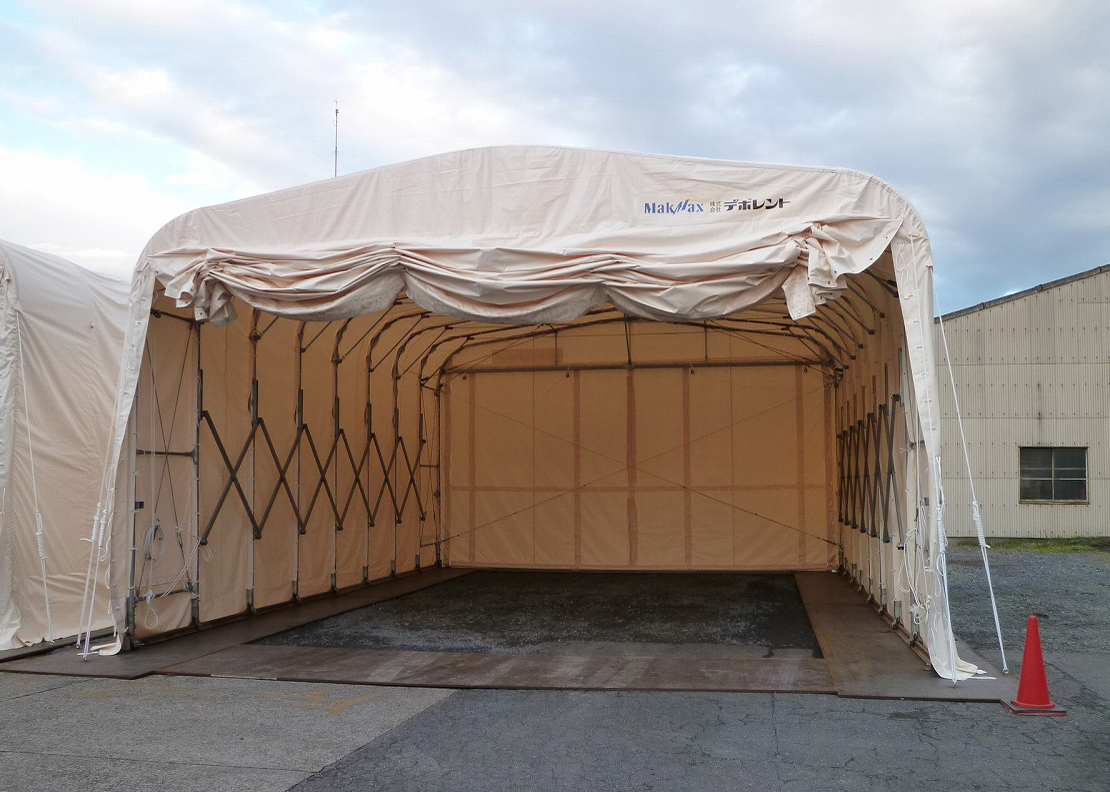
The telescopic temporary roof is a type of temporary roof that itself expands and contracts, allowing long or heavy items to be directly entered or exited by crane.
The shed can be manually expanded and contracted, so no machinery is needed.
Five frontage sizes are available. Installation usually takes one to two days per building, and removal usually takes only one day to restore the building to its current condition.
Telescopic type New type
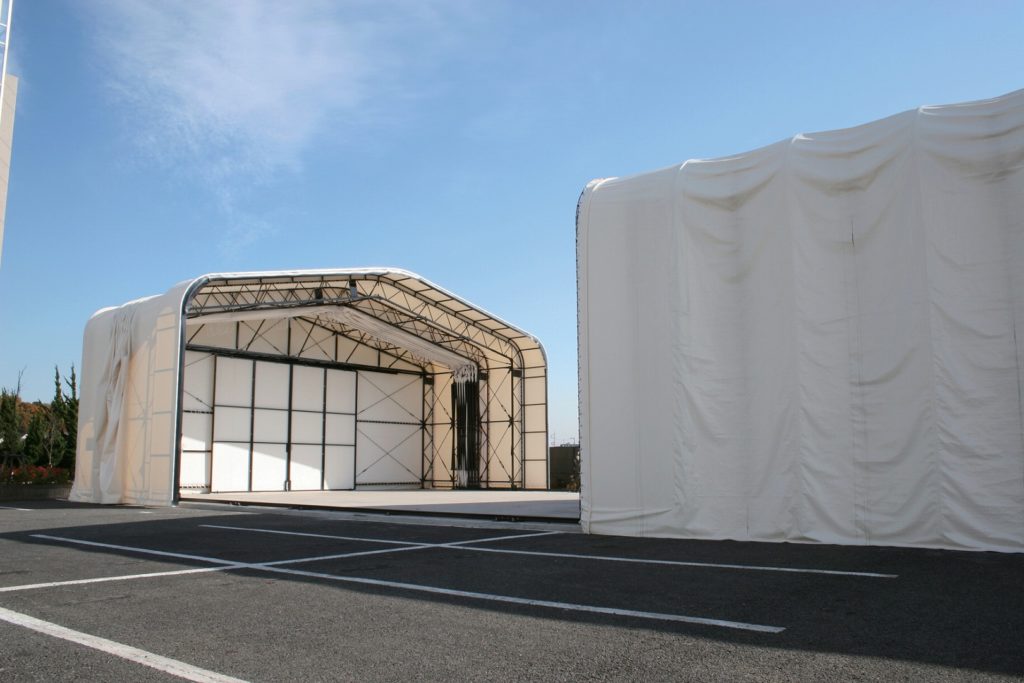
The new telescopic temporary roof is a telescopic roof with a structure that allows the tent to be inserted at each span. You can rent only the amount of area you need. Since the structure is designed to insert a tent for each span, dimensions in the direction of the girder can be freely set for each span (1.5 m).
The opening is curtain-type and can be fully opened by simply sliding it in and out, allowing speedy loading and unloading and improving work efficiency. Installation is simply a matter of inserting and sliding the split membrane along the guide fasteners, improving workability and safety compared to older models.
fixed type
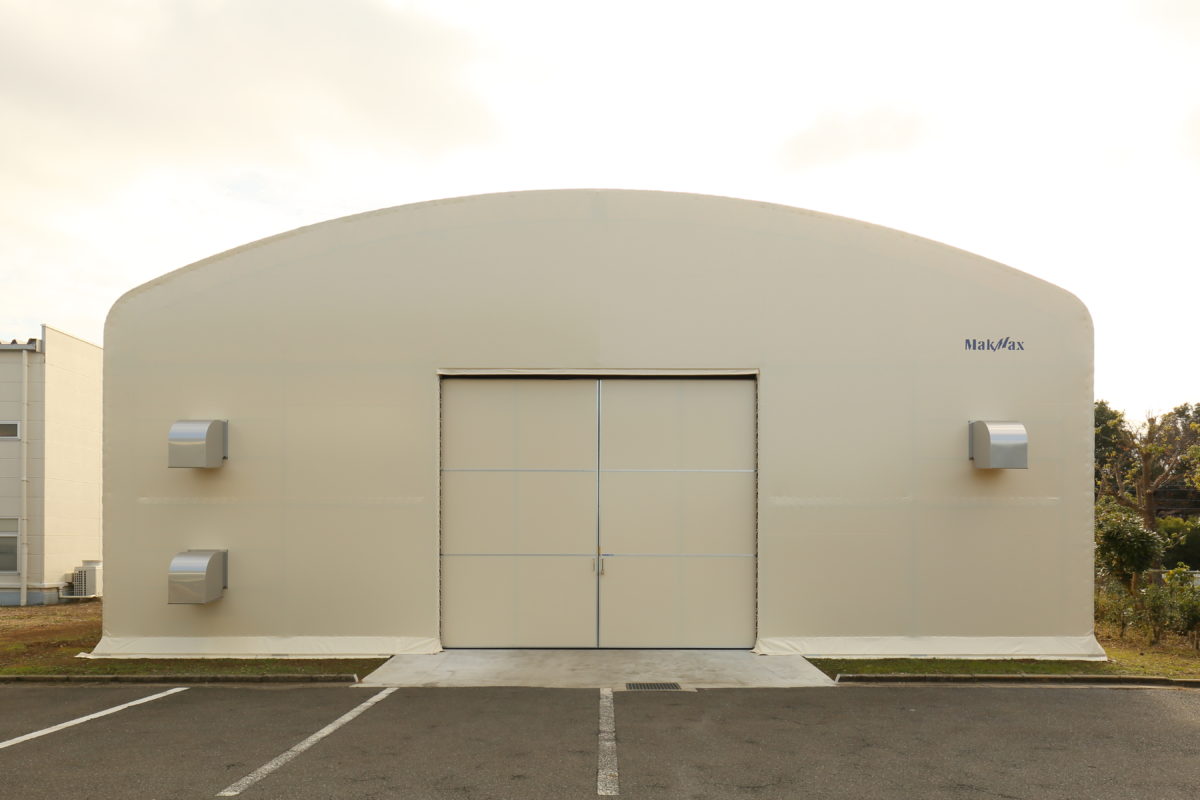
Fixed temporary roofs can easily provide large storage spaces. The advantage is that a functional storage warehouse can be built in a short period of time. The large space without intermediate pillars and an eave height of 7.5 meters provide ample storage space.
The building is compliant with the Building Standard Law, so building permit applications can be submitted.
Fixed Large
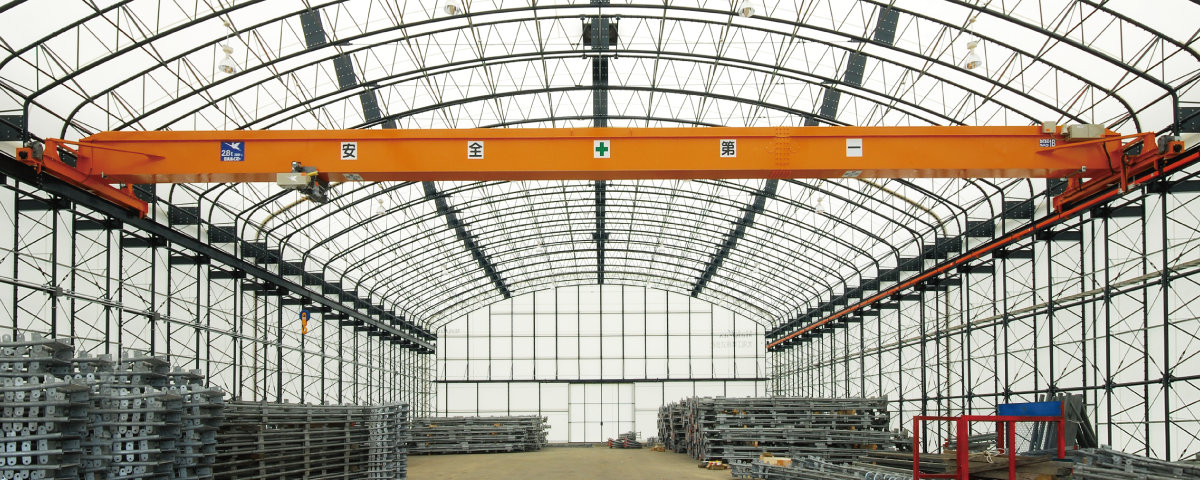
Fixed large temporary roofs are temporary roofs that can accommodate up to about W40m x eaves H10m. In a large space without intermediate support columns, within the effective area, it can be constructed with free approximate dimensions of about 1.8m pitch.
Depending on your needs, large spans of 60m to 80m are also available.
summary
We have found that renting or leasing temporary roofs can streamline the work site, as they can be installed and removed in a short period of time with no application required.
Taiyo Kogyo Corporation is involved in a number of temporary roofing rentals and leases. We are proud of our track record of meeting a variety of challenges and needs and of our high level of responsiveness.
If you would like more information not included in this article, please contact Taiyo Kogyo Co. You can contact us through the following website
Official Website: Taiyo Kogyo Corporation
Tent Warehouseへの
Any Inquries

What you need to know when building a warehouse
We packed it all in.
Clues to solving the 2024 problem
Recommended for
I don't know where to start in building a warehouse.
I want to build a warehouse in an economical way.
Which type of warehouse should we build?
I want to learn the basics of warehouse construction anyway.
I'm concerned about the 2024 problem, but I don't know what to do about it.
Related Articles
- TOP>
- MakMax Plus>
- Advantages of Renting or Leasing Temporary Roofs│Efficiently Manage Contaminated Soil Response Construction Sites







